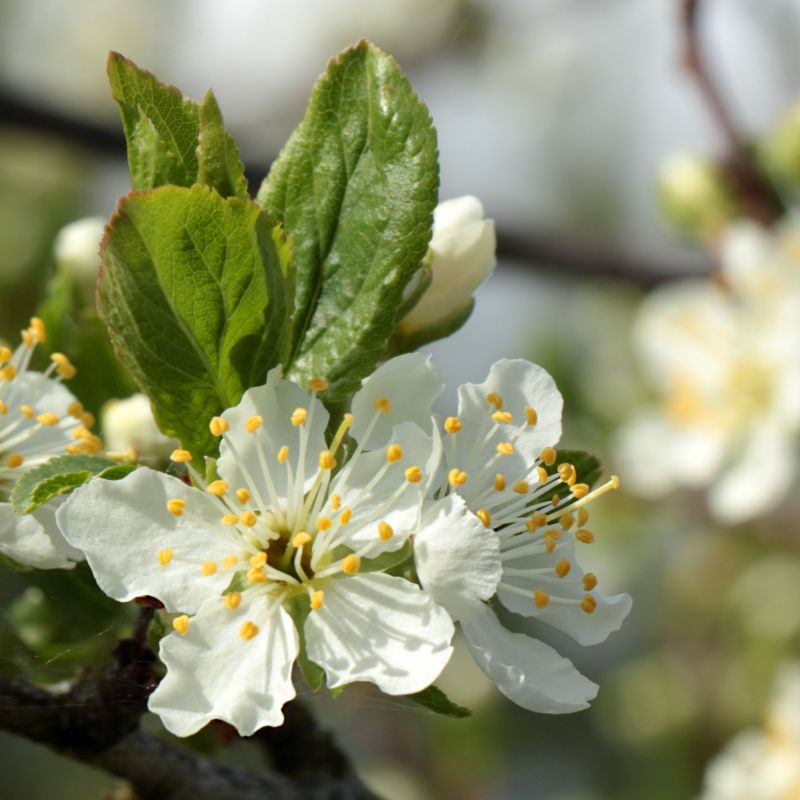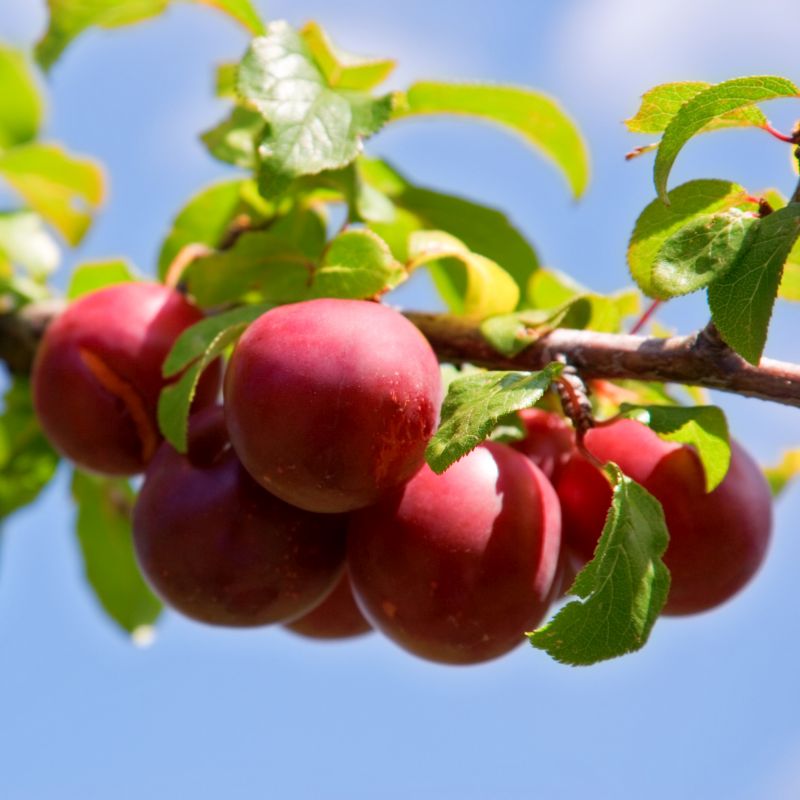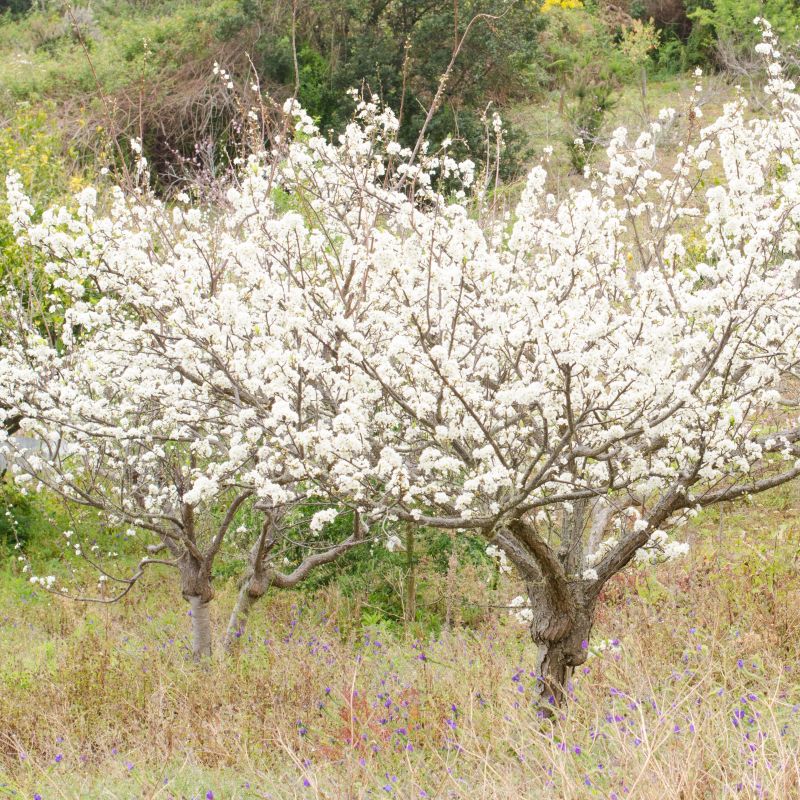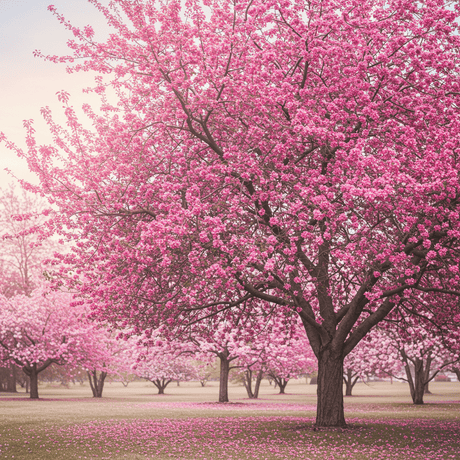Chickasaw Plum
Prunus angustifolia
Plant Sentry™
Plant Sentry™

Plant Sentry™ Protected
Your order is protected by our compliance system that:
- Prevents restricted plants from shipping to your state
- Ensures plants meet your state's agricultural requirements
- Protects gardens from invasive pests and diseases
Delivery and Shipping
Delivery and Shipping
Delivery and Shipping
Fast, Safe Plant Delivery
Ships in 3-4 business days • Tracking provided • Weather protected
| Under $50 | $9.99 |
| $50 - $99.99 | $14.99 |
| $100 - $149.99 | $16.99 |
| $150 - $198.99 | $24.99 |
| $199+ | FREE |
✓ Zone-specific timing • ✓ Professional packaging • ✓ Health guarantee
Understanding Plant Options
Nature Hills offers plants in two main formats:
- Container Plants: Grown in pots with soil, sized by container volume and plant age
- Bare Root Plants: Dormant plants without soil, sized by height measurements
Container Plant Sizes
Container sizes indicate plant age and growing capacity rather than liquid volume equivalents. Our containers follow industry-standard nursery "trade gallon" specifications, which differ from standard liquid gallon measurements.
Young Plants (6 months to 18 months old)
| Container Size | Actual Volume | Metric Equivalent |
|---|---|---|
| 2" x 2" x 3" | 0.18 - 0.21 dry quarts | 0.20 - 0.23 dry liters |
| 4" Container | 0.31 - 0.87 dry quarts | 0.35 - 0.96 dry liters |
| 4.5" Container | 0.65 dry quarts | 0.72 dry liters |
| 6" Container | 1.4 dry quarts | 1.59 dry liters |
| 1 Quart | 1 dry quart | 1.1 dry liters |
| 5.5" Container | 1.89 dry quarts | 2.08 dry liters |
Established Plants (18 months to 2.5 years old)
| Container Size | Actual Volume | Metric Equivalent |
|---|---|---|
| 2 Quart | 2 dry quarts | 2.2 dry liters |
| #1 Container | 2.26 - 3.73 dry quarts | 2.49 - 4.11 dry liters |
| 5" x 5" x 12" | 3.5 - 4.3 dry quarts | 3.85 - 4.74 dry liters |
Mature Plants (2-4 years old)
| Container Size | Actual Volume | Metric Equivalent |
|---|---|---|
| #2 Container | 1.19 - 1.76 dry gallons | 5.24 - 7.75 dry liters |
| #3 Container | 2.15 - 2.76 dry gallons | 8.14 - 12.16 dry liters |
Large Plants (3-5 years old)
| Container Size | Actual Volume | Metric Equivalent |
|---|---|---|
| #5 Container | 2.92 - 4.62 dry gallons | 12.86 - 20.35 dry liters |
| #6 Container | 5.25 - 6.01 dry gallons | 23.12 - 26.42 dry liters |
| #7 Container | 5.98 - 6.53 dry gallons | 26.34 - 28.76 dry liters |
Bare Root Plants
Bare root plants are sold by height from the root system to the top of the plant. Plants may exceed minimum height requirements.
Common Sizes:
- Trees: 1 foot, 2 feet, 3 feet, 4 feet, 5 feet, 6 feet
- Shrubs & Perennials: 1 foot, 18 inches, 2 feet
Important Notes
Container Volume Specifications
- Trade Gallon Standard: Our containers follow industry-standard "trade gallon" specifications established by the American National Standards Institute (ANSI Z60.1) for nursery stock
- Volume Variations: Actual soil volume may vary due to plant root systems and growing medium settlement
- Age Indicators: Container size primarily indicates plant age and maturity rather than liquid volume equivalents
Growing Conditions
- Plant size can vary based on variety and growing conditions
- Container size helps indicate plant maturity and establishment level
- Larger containers generally mean more established root systems and faster landscape establishment
Seasonal Availability
- Bare root plants are available seasonally when dormant
- Container plants are available throughout the growing season
- Specific varieties may have limited availability in certain sizes
Questions?
For questions about specific plant sizes or availability, please contact our plant experts who can help you choose the right size for your landscape needs.

Plant Sentry™ Protected
Your order is protected by our compliance system that:
- Prevents restricted plants from shipping to your state
- Ensures plants meet your state's agricultural requirements
- Protects gardens from invasive pests and diseases
Plant Profile & Growing Essentials
Cold hardy, Native, Flowering, Edible, and Attracts pollinators
-
Botanical Name
-
Height
-
Width
-
Growing Zones
-
Sunlight
-
Growth RateFast
-
Flower Color
-
Leaf Color
-
Fall Color
-
NativeYes
-
Pollinator FriendlyYes
-
Pollinator Required
-
Bloom PeriodLate Spring
-
FragrantYes
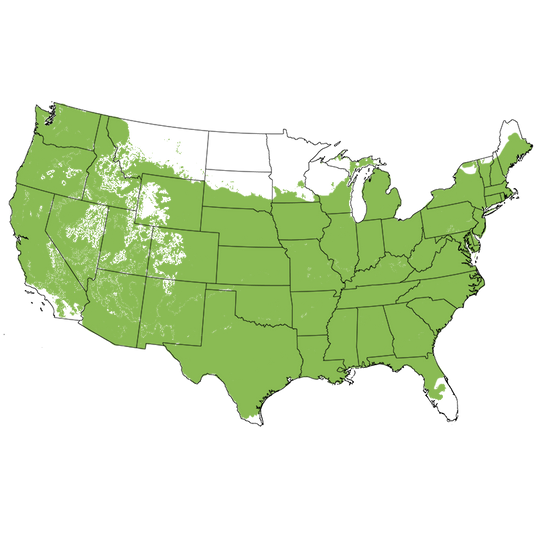
Growing Zones 5-9
Valuable Small Native Tree Chickasaw Plum
- High Quality Plants from Nature Hills Growers
- Self-Pollinating
- Native Plant
- Attractive Ornamental Edible Native
- Fragrant White Spring Flowers Cover Every Branch
- Loaded with Cute, Colorful Fruit in Summer
- Use Fruit in Exceptionally Delicious Jelly
- Long History of Use by Native Americans and Early Settlers
- Multi-Stem Shrub or Pruned to A Tree
- Feeds Birds and Provides Cover for Wildlife
- Excellent for Naturalizing
- Fast Growing
- Easy to Grow
Use this fantastic native tree as a beautiful way to support the health of our integrated ecosystem. Easy-care Chickasaw Plum tree (Prunus angustifolia) is a wonderful option as a unique ornamental in the home garden or to naturalize in a larger landscape.
You can decide to grow this as a multi-stemmed shrub or prune it up into a small tree with a short trunk. Either way, this tree adapts to almost any landscape use. It delivers interest all year long.
In late winter, you’ll be excited to see the swelling buds develop all along the well-balanced branch structure. Almost overnight, sweetly fragrant white blooms cover the dark, attractive bark.
Depending on where you live, the flower power can start as early as February and range through May.
This abundant native grower was found along wide swathes of the United States. It’s named to honor the Chickasaw Nation, who along with other tribes and settlers used the plums as a food staple, and even propagated it.
Native Americans consumed the fruit fresh, dried it for winter and added it to other foods for flavor. The very tart fruit is now most often used in preserves and Jellies with a little added sweetener. The fruit can also be used to make wine.
There is no need to prepare the fruit, as songbirds love the fruit, and so do many other animals. If you have a large landscape, plant Chickasaw Plum as a beautiful tree to protect our environment.
The Chickasaw Plum can satisfy many applications in the landscape. A true ornamental edible, you'll adore the beautiful, fragrant white flowers that appear along the stems in March before the foliage emerges.
This sturdy, ornamental tree stays pretty throughout the year. From the fragrant blooms in the spring to fruit production in the early summer to the yellow leaves in the fall, the trees ornamental appeal never stops. You'll love watching how the flowers are followed by small, cherry-like, red to yellow plums which ripen in early to midsummer.
Plant this one by a window where you'll be able to see the progress from a comfy seat inside. If you have a kitchen window, give yourself a fabulous view of the wonder of nature by planting this tree outside.
Use these small native trees to produce a fantastic spring floral display and as an unmatched addition to food forests to support the needs of wildlife. You'll love the small edible fruits in homemade jellies, if you can get them before the bevy of birds and foraging animals gets to them first.
Try making a prepared jelly for your Thanksgiving dinner rolls or to zip up savory meat dishes. Ask your family to give thanks for modern inventions like grocery stores! This can become a very meaningful family tradition.
The flowering Chickasaw Plum is a true ornamental with pretty textured bark and a pleasing branch structure. You'll appreciate seeing more nesting birds and butterflies visit your yard. Order yours today!
How to Use Chickasaw Plum in the Landscape
Also known as a Sand Plum, Sandhill Plum and Mountain Cherry, this is a versatile plant. Use it as the edge of your property and let it naturalize into a wildlife sanctuary for ground-nesting birds like quail or turkey. Or, keep it manicured by pruning it up into a lovely, low tree.
Use a single specimen just about anywhere. Keep it pruned to maintain a tidy look. Allow it to spread wide to become a lovely, living free form sculpture in your landscape.
For naturalizing along the edge of a woods, or bare open field, plant groupings of 3, 5, 7 or 9. For the best look, use a loose, drifting planting pattern.
Vary the spacing between them from 6 to 15 feet on center. Measure from the center of one to the center of the next. Start with a single tree on either end, then try planting 2 - 3 deep in the middle of the drift. Allow the clumps to grow together and expand.
You can also allow the plant to grow and fill in from the crown. Unchecked, this tree provides great erosion control on a slope. Pair it with spreading Sumacs and groundcover Juniper for a year-round display that is far safer than trying to mow at a steep angle.
Try facing the sunny side of a windbreak with these pretty flowering and fruiting trees. You’ll gain interest and easily soften the look. These native trees make a perfect partner for rugged Black Hills Spruce, Colorado Spruce, Eastern Red Cedar, Loblolly Pine or other large evergreens.
Include it in a created Oak Savannah as part of an integrated food forest. These plums are wildlife magnets and will be so welcomed by your local ecosystem.
#ProPlantTips for Care
The natural habitat is along stream banks and as thickets forming large colonies is fields. Requiring only well drained soil, the Chickasaw Plum grows in a wide range of soils and climates.
Grow in full sun for the thickest growth. In partial shade, the growth habit will spread out a bit and become more open and airier.
When mature, you’ll see deer bed down in them and eat the fruit. You might consider fencing young plants to protect their tender trunks for the first several years.
If used as a specimen single trunk or multi-trunk tree, Chickasaw Plum benefits from being pruned regularly to keep it tidy. Remove any growth from the crown suckers out all the way down to the ground.
The plant requires an acid soil of at least 6.5. It’s a good idea to use a simple soil test to determine pH before planting. If needed, adjust pH down using a soil Sulphur a least one time a year.
Provide a moderate amount of regular water to new plants. Once they are established in your soil, they will become tolerant of periodic drought. Apply supplemental water in extended drought.
This native treasure is a very special plant. Chickasaw Plum fits the bill as a “Giving Tree.” Give back to your local butterflies and birds and delight your senses. Savor the beautiful fragrant spring flowers and craft scrumptious jellies with the cute and colorful plums. Order yours today!
Plum Tree Frequently Asked Questions
How long does it take for Chickasaw Plum Trees to bear fruit?
Nature Hills Nursery sells fruit trees with mature root systems that are already three to four years old, so you’ll enjoy fruit sooner than you would with younger trees! Expect young Plum trees to begin fruiting usually by the 2nd to 4th year after they establish in your landscape.
How big do Chickasaw Plum trees grow? How fast do Plum trees grow?
The Chickasaw Plum tree can grow to a mature height of 15-25 feet and a mature width of 15-15 feet.
Once your Plum tree has been established (after the first year), it can typically add 25 inches of new growth per growing season. If your plants are growing less than that in a season, it may be worth your while to check the fertility level.
Where is the best place to plant a Chickasaw Plum Trees?
Plum trees grow best in well-drained, fertile soil in at least 6 hours of full sun per day or more. Provide good air circulation and moderate, yet consistent water in well-drained, fertile soil.
Do You Need 2 Plum Trees to Produce Fruit?
The Chickasaw Plum trees are self fertile, so planting more than one Plum tree that blooms at about the same time, boosts yields on both trees and extends your harvest time!
No room? Look into High-Density Planting techniques, or choose a semi-dwarf or dwarf fruit tree.
When Should Chickasaw Plum Tree be Planted?
Bareroot Plum trees can be planted in spring when they are available in your area. Container-grown Plum trees can be very successfully transplanted all throughout the growing season. Check for first and last frost dates for your area with your local County Extension Office.
- Plant bareroot Plum trees in the early spring.
- Plant container-grown trees anytime the ground is not frozen by digging a hole as deep as the soil line and twice as wide.
How Do I Find Chickasaw Plum Trees for Sale Near Me?
Make your life easier and your landscape tastier by shopping for Plum trees at NatureHills.com online fruit tree nursery. You’ll find a massive selection of fruit trees for sale, including many lovely Plum tree varieties!
Choose the right tree for your area by first finding your USDA growing zone by entering your zip code in the field above the Plant Highlights section on our product pages. Narrow down your options by plant hardiness zone, sun availability, and size requirements.
Place your order, knowing it’s backed by the Nature Hills Nursery product guarantee and protected by Plant Sentry™, which helps ensure regulated plant materials aren’t sent to prohibited areas.
Expect to receive your plants at the appropriate planting time for your growing zone when temperatures are safest for those plants that ship in fall, winter, or early spring.
Shop the selection of mature Plum trees for sale at Nature Hills Nursery and place your order for Chickasaw Plum Tree today.
What shipping options do you offer?
NatureHills.com works closely with our growers and nursery professionals to ensure we ship when it is most appropriate for your area. Our goal is to deliver the hardiest plants by avoiding extreme high and low temperatures. Check out our shipping schedule for more information and to learn our wills and won’ts when it comes to shipping plants. Find your Chickasaw Plum Tree for sale here at NatureHills.com!

